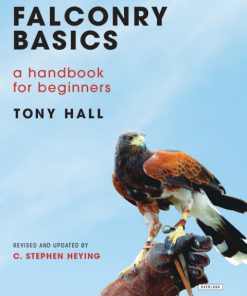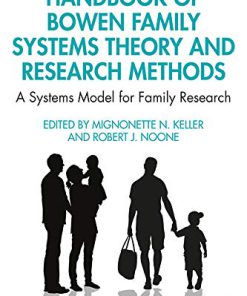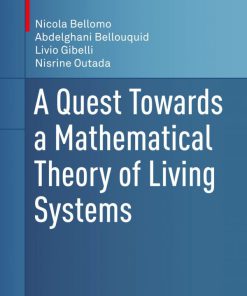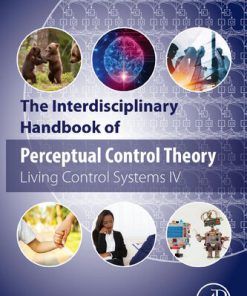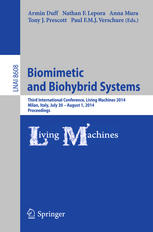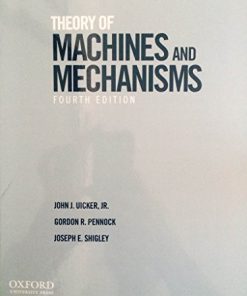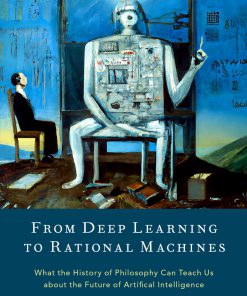Living Machines A Handbook of Research in Biomimetics and Biohybrid Systems 1st Edition by Tony Prescott, Nathan Lepora, Paul Verschure 0191666810 9780191666810
$50.00 Original price was: $50.00.$25.00Current price is: $25.00.
Living Machines: A Handbook of Research in Biomimetics and Biohybrid Systems 1st Edition by Tony J. Prescott, Nathan Lepora, Paul F.M.J Verschure – Ebook PDF Instant Download/DeliveryISBN: 0191666810, 9780191666810
Full download Living Machines: A Handbook of Research in Biomimetics and Biohybrid Systems 1st Edition after payment.
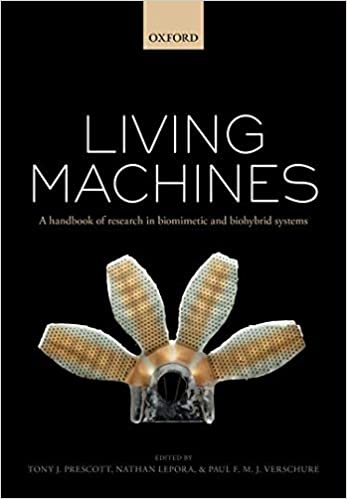
Product details:
ISBN-10 : 0191666810
ISBN-13 : 9780191666810
Author: Tony J. Prescott, Nathan Lepora, Paul F.M.J Verschure
Contemporary research in science and engineering is seeking to harness the versatility and sustainability of living organisms. By exploiting natural principles, researchers hope to create new kinds of technology that are self-repairing, adaptable, and robust, and to invent a new class of machines that are perceptive, social, emotional, perhaps even conscious. This is the realm of the ‘living machine’. Living machines can be divided into two types: biomimetic systems, that harness the principles discovered in nature and embody them in new artifacts, and biohybrid systems in which biological entities are coupled with synthetic ones. Living Machines: A handbook of research in biomimetic and biohybrid systems surveys this flourishing area of research, capturing the current state of play and pointing to the opportunities ahead. Promising areas in biomimetics include self-organization, biologically inspired active materials, self-assembly and self-repair, learning, memory, control architectures and self-regulation, locomotion in air, on land or in water, perception, cognition, control, and communication. Drawing on these advances the potential of biomimetics is revealed in devices that can harvest energy, grow or reproduce, and in animal-like robots that range from synthetic slime molds, to artificial fish, to humanoids. Biohybrid systems is a relatively new field, with exciting and largely unknown potential, but one that is likely to shape the future of humanity. This book surveys progress towards new kinds of biohybrid such as robots that merge electronic neurons with biological tissue, micro-scale machines made from living cells, prosthetic limbs with a sense of touch, and brain-machine interfaces that allow robotic devices to be controlled by human thought. The handbook concludes by exploring some of the impacts that living machine technologies could have on both society and the individual, exploring questions about how we will see and understand ourselves in a world in which the line between the natural and the artificial is increasingly blurred. With contributions from leading researchers from science, engineering, and the humanities, this handbook will be of broad interest to undergraduate and postgraduate students. Researchers in the areas of computational modeling and engineering, including artificial intelligence, machine learning, artificial life, biorobotics, neurorobotics, and human-machine interfaces will find Living Machines an invaluable resource.
Living Machines: A Handbook of Research in Biomimetics and Biohybrid Systems 1st table of contents:
Section I Roadmaps
1 Living Machines: An introduction
2 A Living Machines approach to the sciences of mind and brain
3 A roadmap for Living Machines research
Section II Life
4 Life
5 Self-organization
6 Energy and metabolism
7 Reproduction
8 Evo-devo
9 Growth and tropism
10 Biomimetic materials
11 Modeling self and others
12 Towards a general theory of evolution
Section III Building blocks
13 Building blocks
14 Vision
15 Audition
16 Touch
17 Chemosensation
18 Proprioception and body schema
19 Electric sensing for underwater navigation
20 Muscles
21 Rhythms and oscillations
22 Skin and dry adhesion
Section IV Capabilities
23 Capabilities
24 Pattern generation
25 Perception
26 Learning and control
27 Attention and orienting
28 Decision making
29 Spatial and episodic memory
30 Reach, grasp, and manipulate
31 Quadruped locomotion
32 Flight
33 Communication
34 Emotions and self-regulation
35 The architecture of mind and brain
36 A chronology of Distributed Adaptive Control
37 Consciousness
Section V Living machines
38 Biomimetic systems
39 Toward living nanomachines
40 From slime molds to soft deformable robots
41 Soft-bodied terrestrial invertebrates and robots
42 Principles and mechanisms learned from insects and applied to robotics
43 Cooperation in collective systems
44 From aquatic animals to robot swimmers
45 Mammals and mammal-like robots
46 Winged artifacts
47 Humans and humanoids
Section VI Biohybrid systems
48 Biohybrid systems
49 Brain–machine interfaces
50 Implantable neural interfaces
51 Biohybrid robots are synthetic biology systems
52 Micro- and nanotechnology for living machines
53 Biohybrid touch interfaces
54 Implantable hearing interfaces
55 Hippocampal memory prosthesis
Section VII Perspectives
56 Perspectives
57 Human augmentation and the age of the transhuman
58 From sensory substitution to perceptual supplementation
59 Neurorehabilitation
60 Human relationships with living machines
61 Living machines in our cultural imagination
62 The ethics of virtual reality and telepresence
63 Can machines have rights?
64 A sketch of the education landscape in biomimetic and biohybrid systems
65 Sustainability of living machines
People also search for Living Machines: A Handbook of Research in Biomimetics and Biohybrid Systems 1st:
living machines 2022
living handbook
living machines
living machines book
living handbook of narratology
Tags: Living Machines, Handbook, Research, Biomimetics, Biohybrid Systems, Tony Prescott, Nathan Lepora, Paul Verschure
You may also like…
Animals & Pets - Birds
Falconry Basics A Handbook for Beginners Second Revised Edition Tony Hall
Psychology - Clinical Psychology
Computers - Computer Science
A Quest Towards a Mathematical Theory of Living Systems Nicola Bellomo 3319574361 9783319574363
Romance - LGBTQ+ Romance
Politics & Philosophy - Social Sciences
Computers - Computer Science
Computers - Artificial Intelligence (AI)
From Deep Learning to Rational Machines 1st Edition Cameron J. Buckner
Education Studies & Teaching - School Education & Teaching
A Contemporary Theory of Mathematics Education Research Tony Brown


